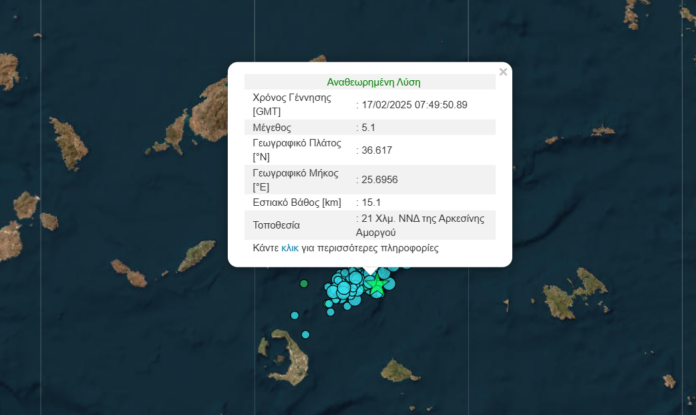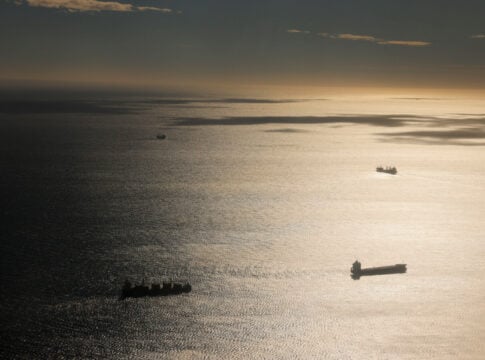An earthquake measuring 5.1 on the Richter scale occurred on Monday, at 09:49 am, in the sea area between Santorini and Amorgos.
According to the initial assessment of the Geodynamic Institute, the earthquake was located in the sea area 21 km south-southwest of Arkesini, Amorgos. The focal depth of the earthquake was estimated at 15.1 km.
It was preceded by another earthquake measuring 4.2 on the Richter scale at 09:46 am , in the area 20 km south-southwest of Arkesini, Amorgos.
It has been reported that many tremors of more than 4 on the Richter scale have occured in the last few hours.
Quakes were also recorded overnight. The strongest ones, according to data published by the Geodynamic Institute of the National Observatory of Athens, were 4.5 and 4.2 on the Richter scale.
Papazachos on 5.1 Richter: It is not over
Speaking to public broadcaster ERT, Professor of Seismology at the Aristotle University of Thessaloniki and President of the Institute for the Study and Monitoring of the Santorini Volcano, Konstantinos Papazachos, noted that today’s 5.1 Richter earthquake “shows that as a Greek scientific community we were not so naive as to believe that the sequence ends because we had two days of calmness.”
“We know that these phenomena are long-term, take time, do not calm down easily and that they have micro-structures and micro-eruptions that make up a more difficult puzzle. So people should not consider that the story is over. This story is not over and will continue for quite some time,” he said, estimating that “we will have more such earthquakes and sequences in the coming days.”
Regarding the possibility of a larger earthquake, he replied: “The picture that exists at a global level from such events that involve magmatic activation is that very large earthquakes do not occur. However, the possibility of a stronger earthquake in the same area or on a neighboring fault cannot be ruled out, which is why the measures remain strict. We knew that the situation had not ended. No one wants to close schools, to block areas, but the safety of the people is above all.”
It is noted that during the period between January 26 and February 14, more than 16,900 earthquakes of magnitude greater than one have been recorded in the zone between Amorgos and Santorini, according to the Seismology Laboratory of the National and Kapodistrian University of Athens (NKUA).














